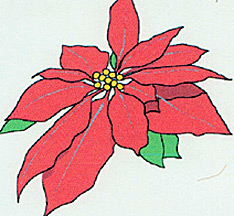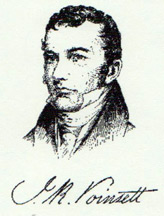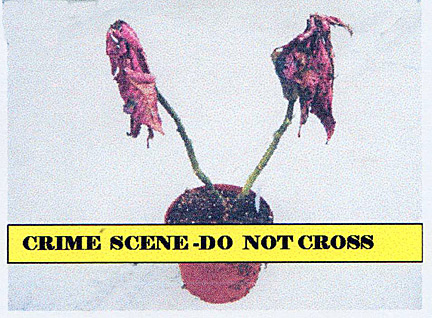
So, like many, you probably missed celebrating National Poinsettia Day. It was December 12.
You probably also missed the black Friday sale of decent-sized poinsettia plants for 96-cents apiece, also. But then an early purchase might not have been a long-lasting one.
What accounts for the popularity of the poinsettia, commonly known as the Christmas flower, Easter flower, pageallo, Mexican flame leaf and lobster flower plant? In 2012 65 million poinsettias were sold nationwide, amounting to over $230 million. The top producer of poinsettias is California where reportedly 27 million plants are sold annually.
Although the Aztecs used poinsettia leaves to dye fabric and used its sap (it is a euphorb characterized by a milky latex emulsion found in its lactiferous vessels), the plant's association with Christmas began in the 16th century in Mexico. You might have heard the tale of a young girl who was too poor to provide a gift for the celebration of Jesus' birthday but smart enough to listen to an angel who told her to gather weeds from the side of the road for placing in front of her church's altar. What an idea. Those beautiful crimson blossoms sprouted from the "weeds" and eventually became a symbol of the Star of Bethlehem with its red color representing the blood sacrifice Jesus made.

Dr. Joel Roberts Poinsett, pictured in the drawing at left, an amateur botanist and first U.S. ambassador to Mexico (and, maybe, continued promoter of the angel story), introduced the poinsettia to the United States. He claims to have discovered the shrub growing on the side of the road in Taxco, Mexico. That happened in December 1828. The poinsettia industry was fostered by the Ecke family in California. Paul Ecke developed a grafting technique used to grow the plant allowing his family to have a tight reign on production.
The misconception that poinsettias are highly toxic was the result of an urban legend dating back to 1919 but disproved by the National Poison Control Center and the American Medical Association. (In a study by Wink et al a sizable number of rats were fed 25g/kg of the plant; no rats died.) It is difficult to fathom how poinsettias could be used internally, as folk medicine lore suggests, since if ingested the plant could cause stomach irritation and discomfort, cats and children may choke on its fibrous leaves and a rash could develop from its sticky white sap.
Keeping a poinsettia alive post holiday season is challenging. They enjoy a comfortable temperature, moist but not soggy soil and natural light. Once the leaves of the plant wilt, give them last rites. If not run over, they may survive best along that side of the road.

Editor's note: Agronomy specialist Tim Schnakenberg from Stone County, Missouri offers advice for trying to regrow the plant in the spring. It may be found here.






Comments